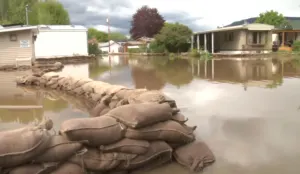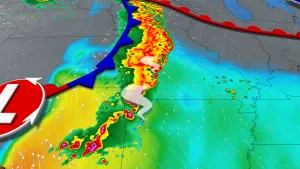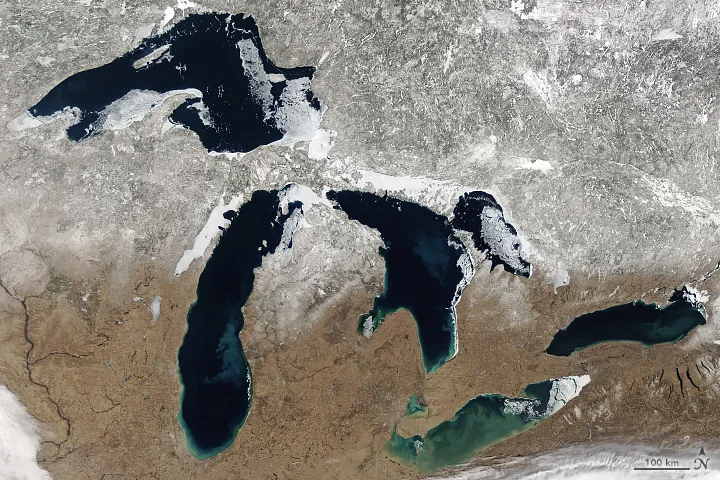
Amid a milder season, Great Lakes ice coverage at a historic low
Long stretches of above-seasonal daytime highs have left the five lakes' ice coverage at less than 10 per cent.
Snow squalls are likely to dance across the Great Lakes right into February – and the culprit is the lakes' very low ice cover.
Over the past couple of months, temperatures enveloping the Great Lakes punched in at a couple of degrees above normal. That persistent warm anomaly without any lack of sustained Arctic air was the perfect recipe for a current-record minimum ice cover – but there's still time to exceed the previous minimum.
On January 28th, only 9.1 per cent of the water in the Great Lakes Basin had ice cover. The previous all-time minimum ice coverage sits at 13.2 per cent, the infamously abysmal 2012 ice cover.

Most of the Great Lakes are still sitting below the record-low benchmarks from 1998, 2002, and 2012 – except Lake Erie. Over the past week, the cooler temperatures have allowed the shallow lake to freeze over delicately in a few pockets. We’re watching for potentially sharp lake-ice increases over the next several days because of the coldest air of the season is overhead.
WHAT’S NORMAL?
According to data from the Canadian Ice Service, average ice coverage sits around 30 per cent for early February, a far cry from the measly 7-8 cent measured at the end of January.
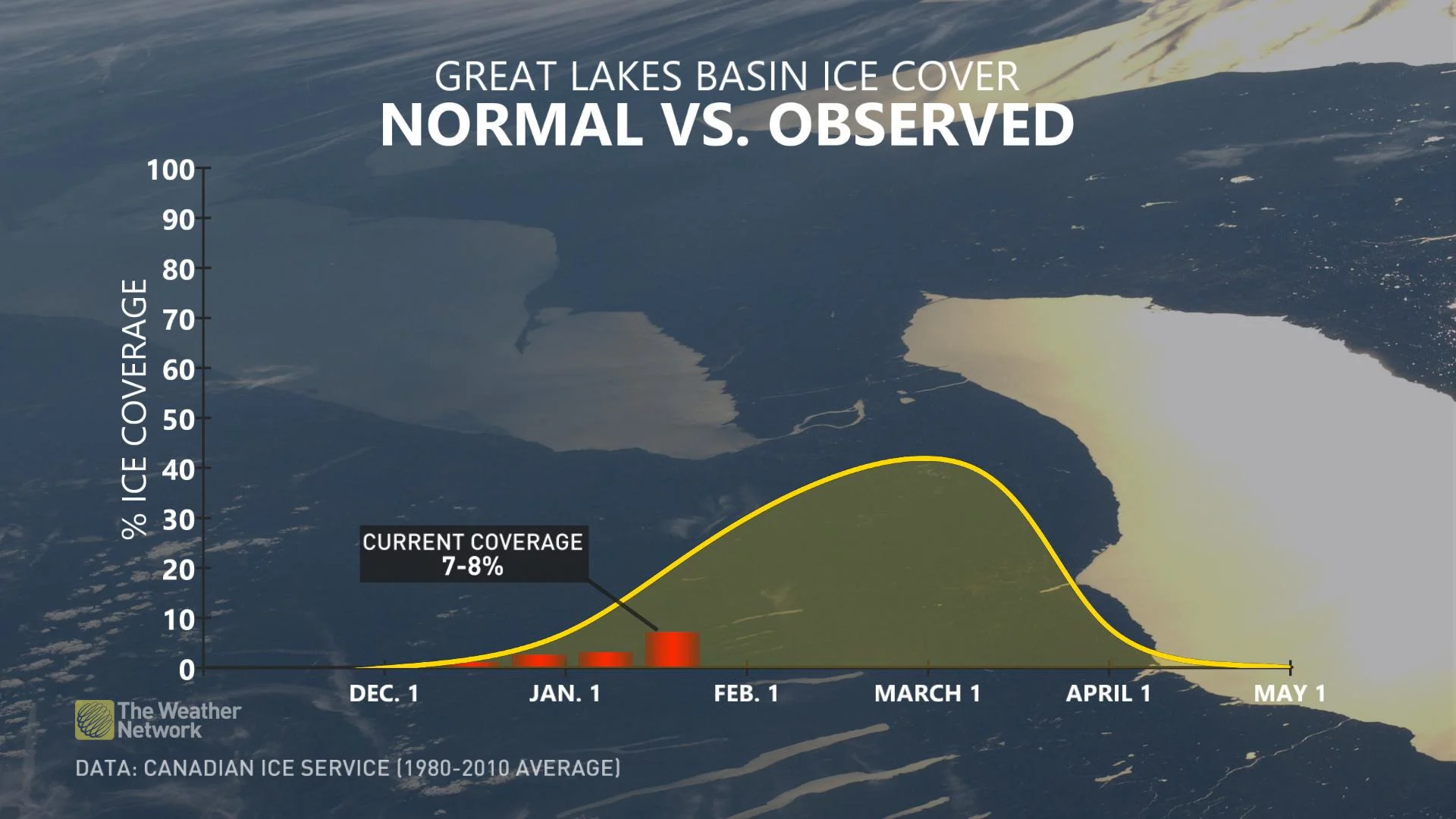
An average peak of about 40 per cent occurs in early March, but there's high season-to-season variability of ice coverage in the Great Lakes basin.
The year-to-year ice variability is driven by atmospheric teleconnections, large-scale anomalies that influence the atmosphere. The decrease in maximum ice coverage and delay of freeze-up is likely occurring because of climate change.
HIGHEST ICE COVERAGE?
Let's all take a moment to time-travel back to March 6th, 2014. Ice coverage reached over 94 per cent across the basin, and NASA holds the evidence via satellite imagery.
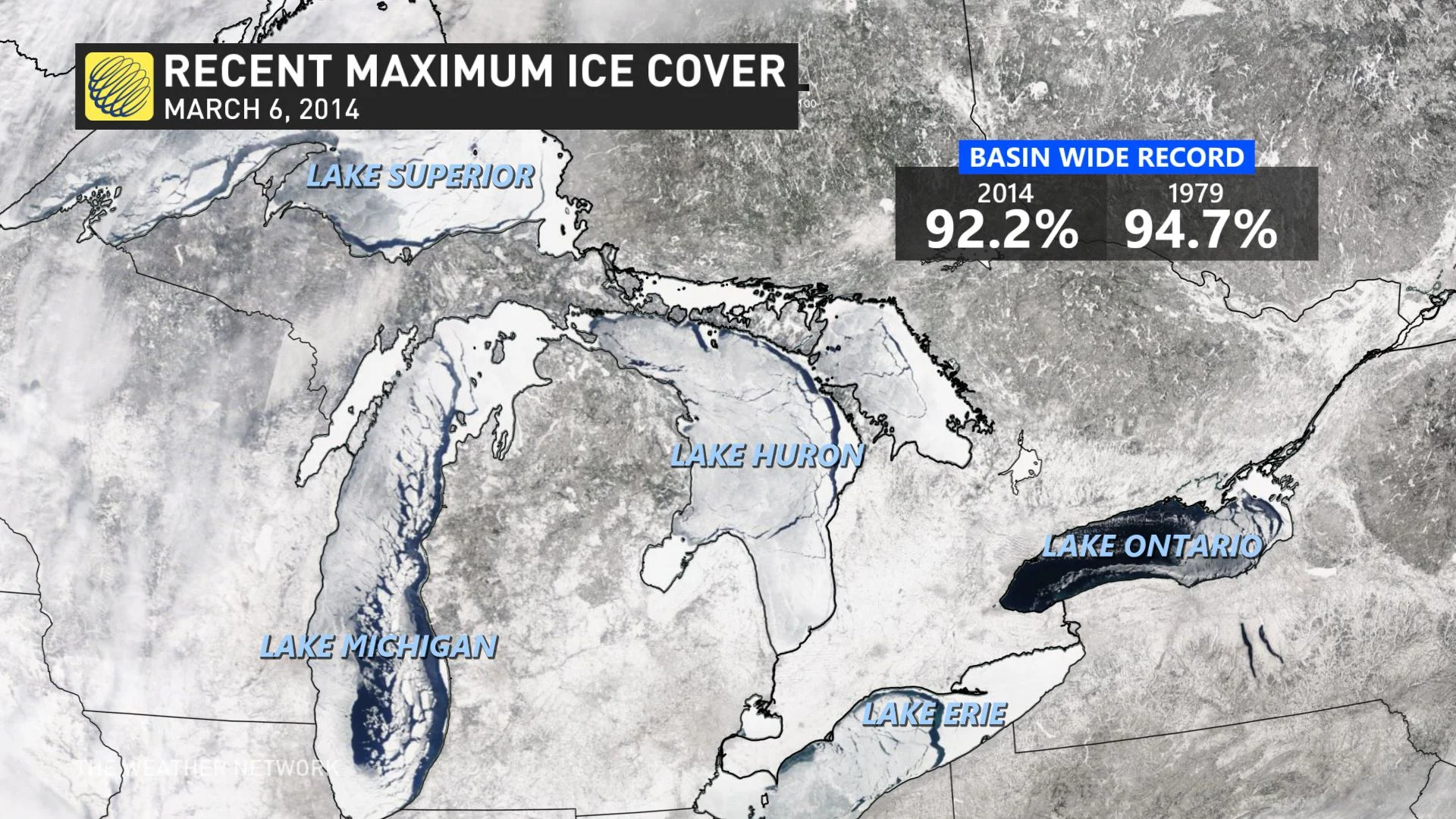
But the ultimate icy season remains 1979, when ice coverage reached nearly 95 per cent.
Over the next couple of weeks, arctic air will attempt to press across the Great Lakes Basin, likely igniting snow squall events in the traditional snow belts well into February – a lake-effect phenomenon made more likely given the open stretches of water on the lakes.







